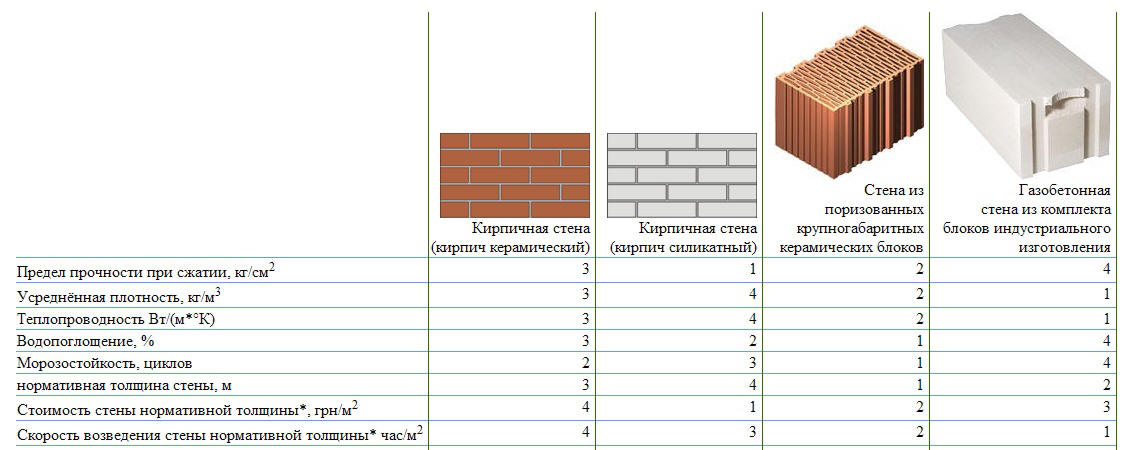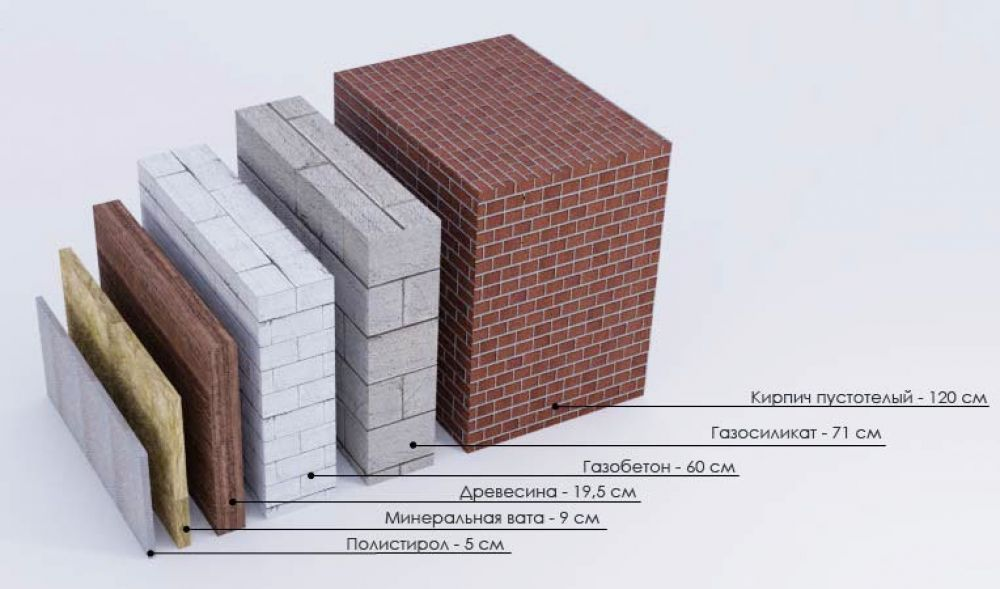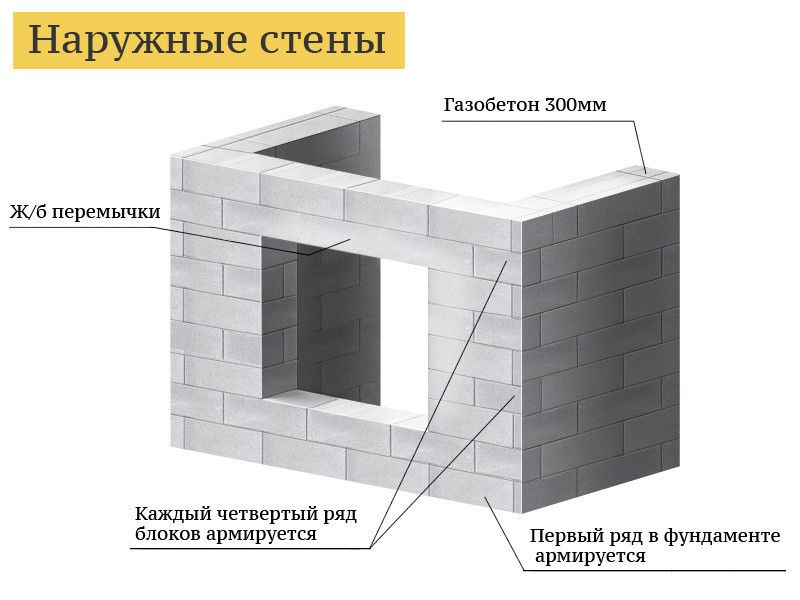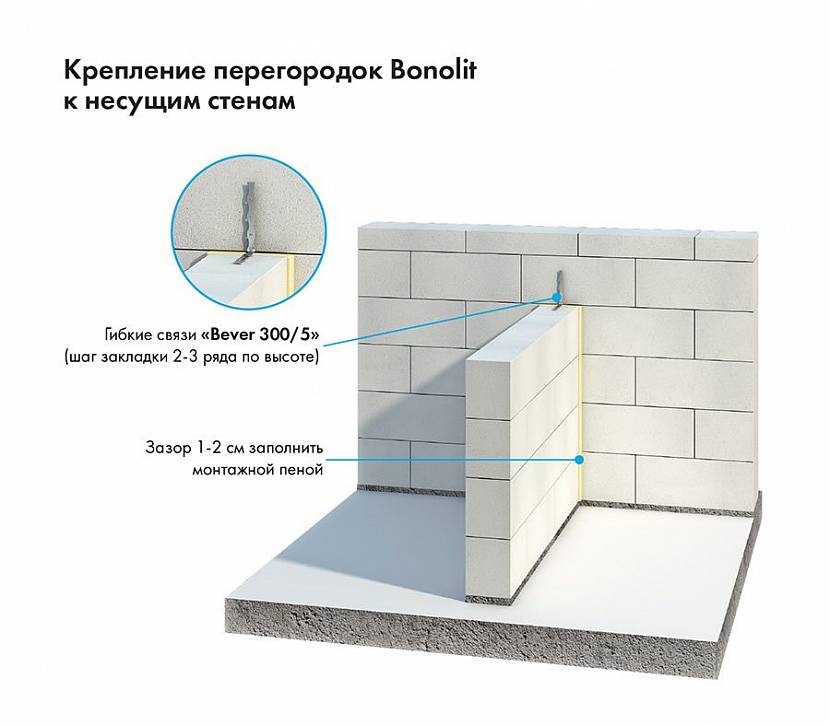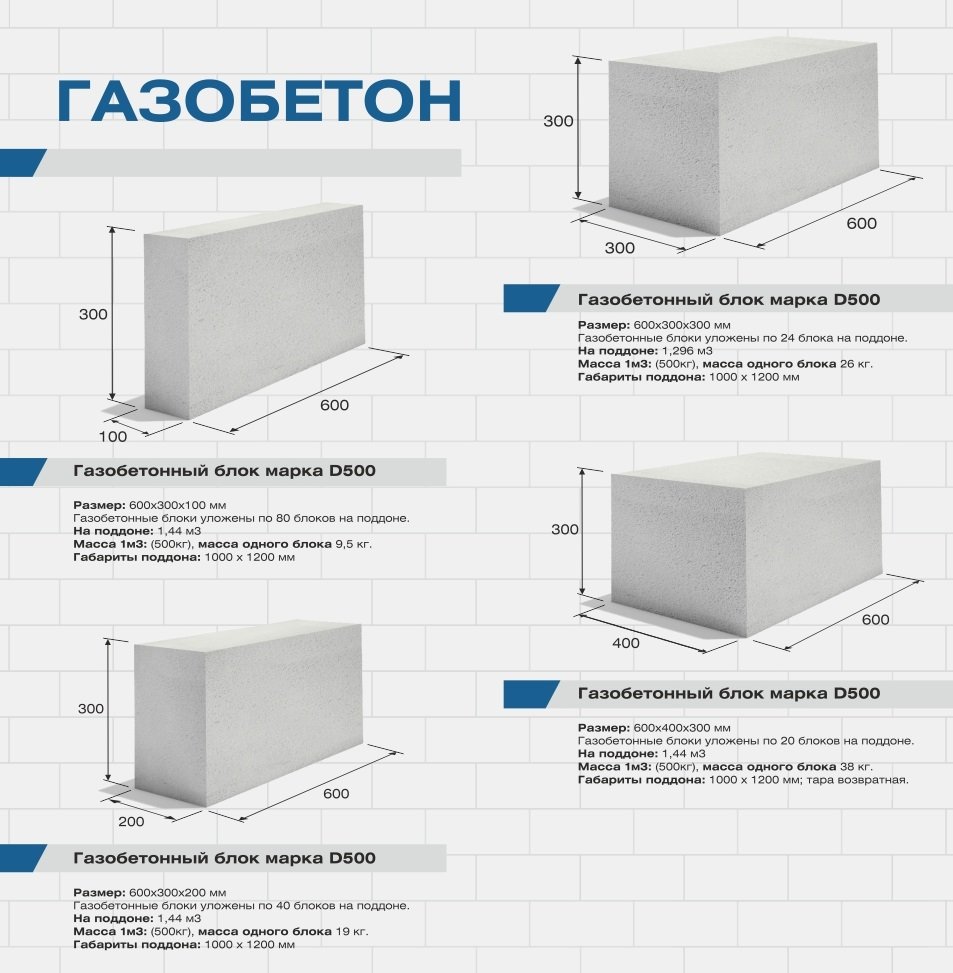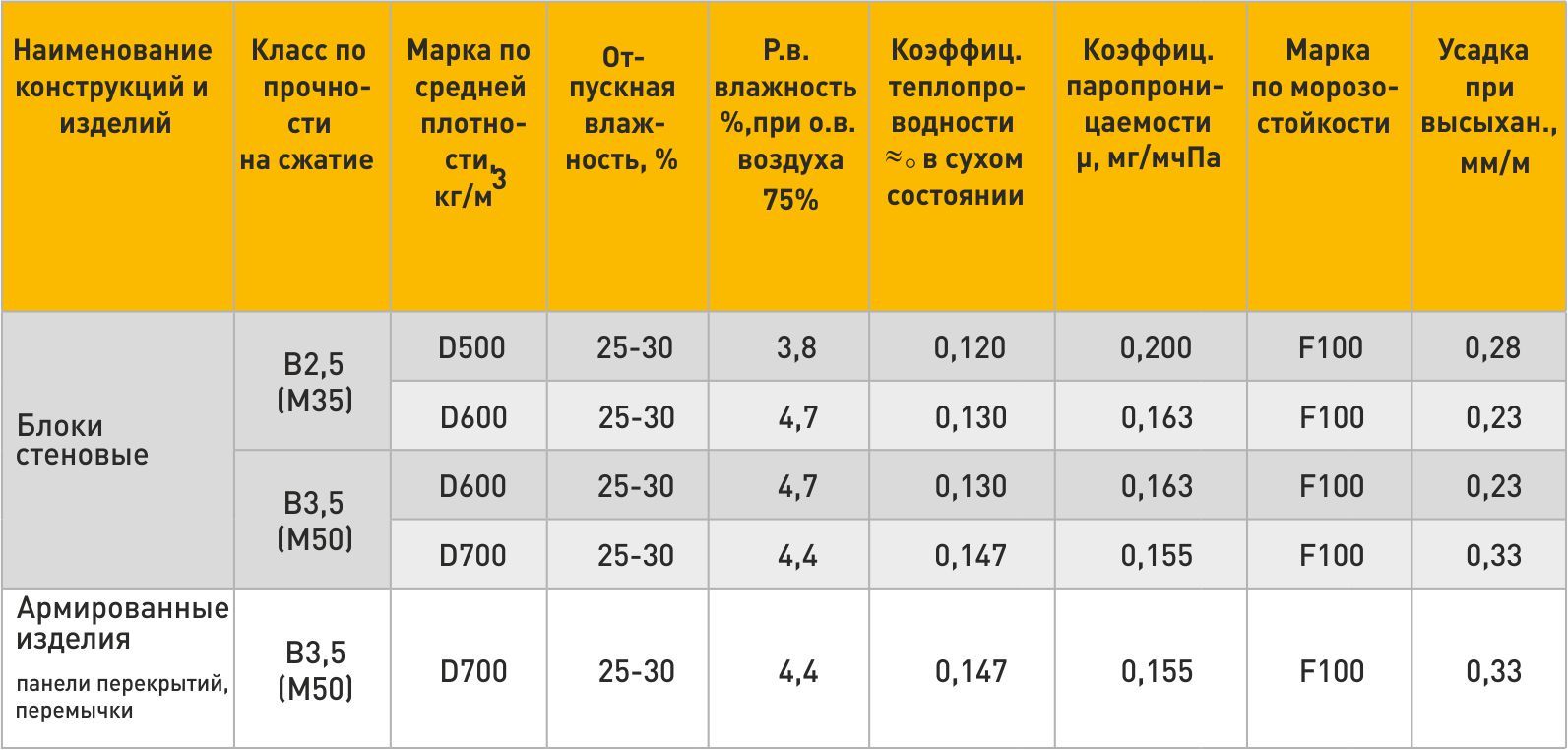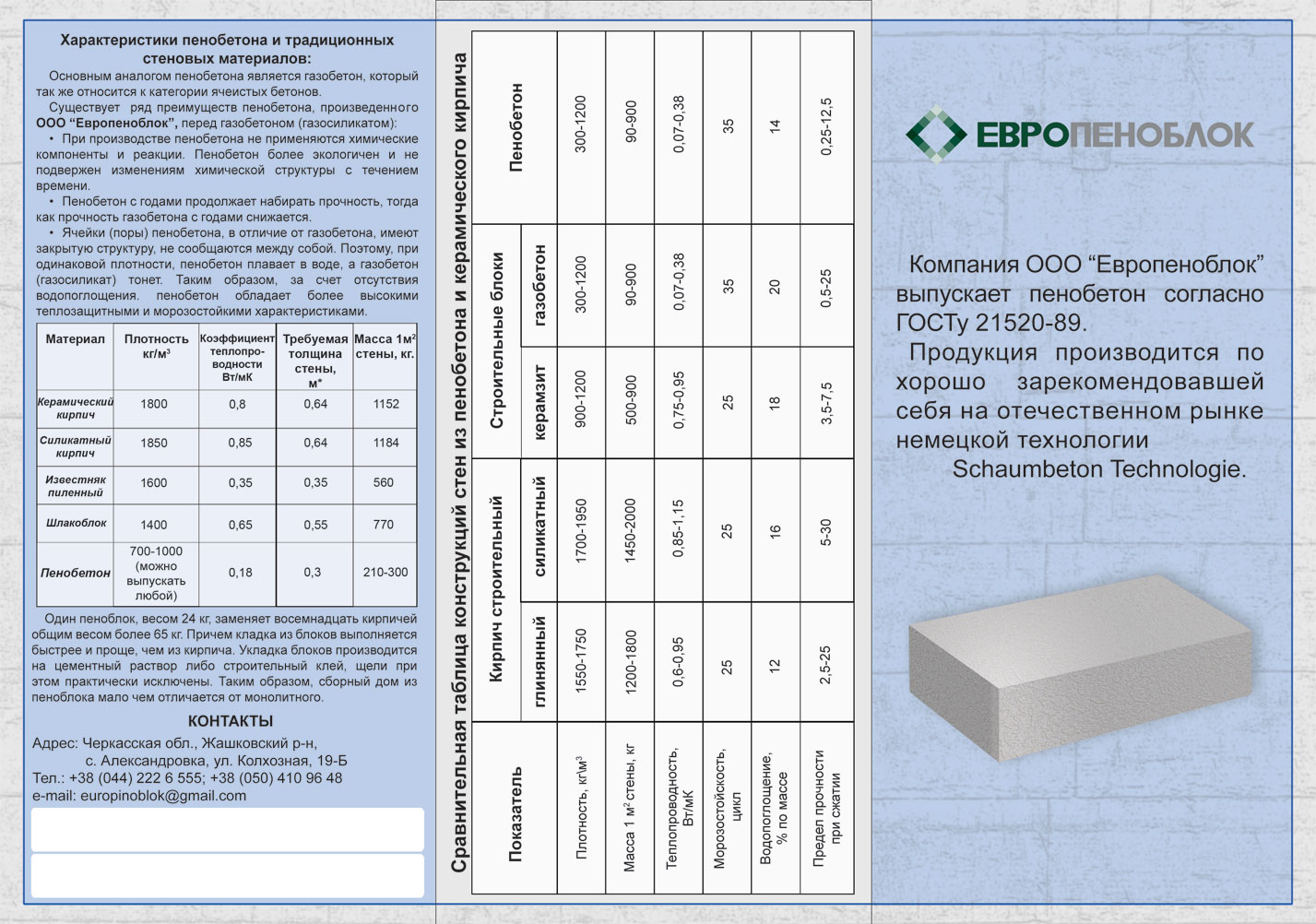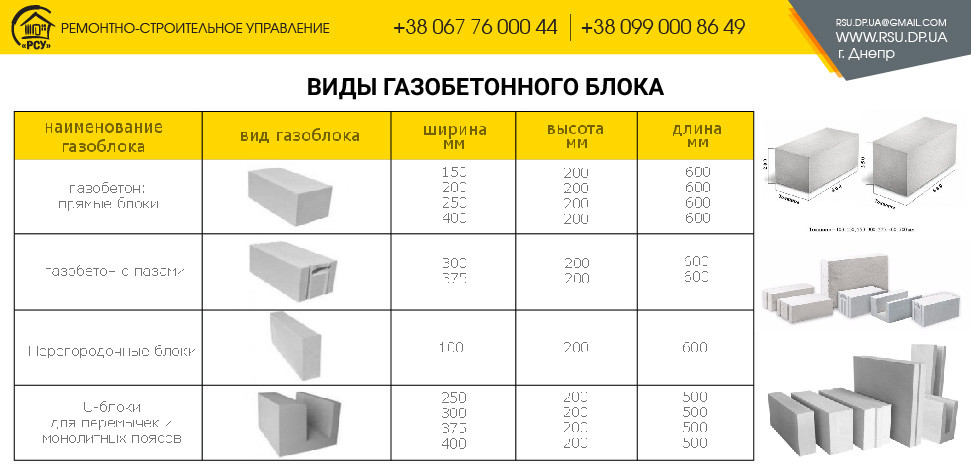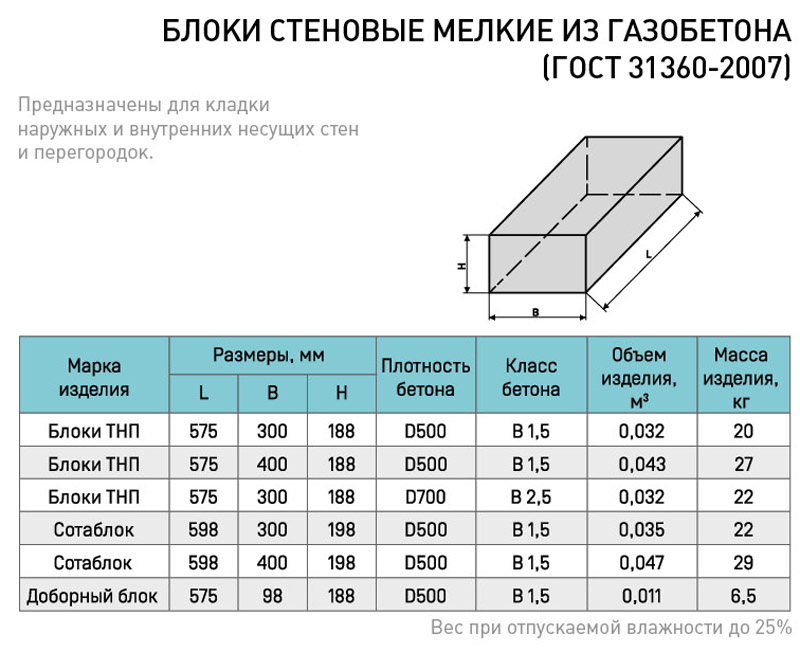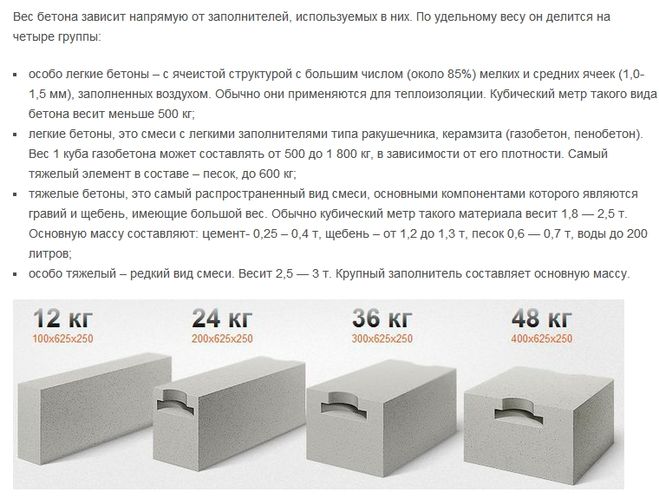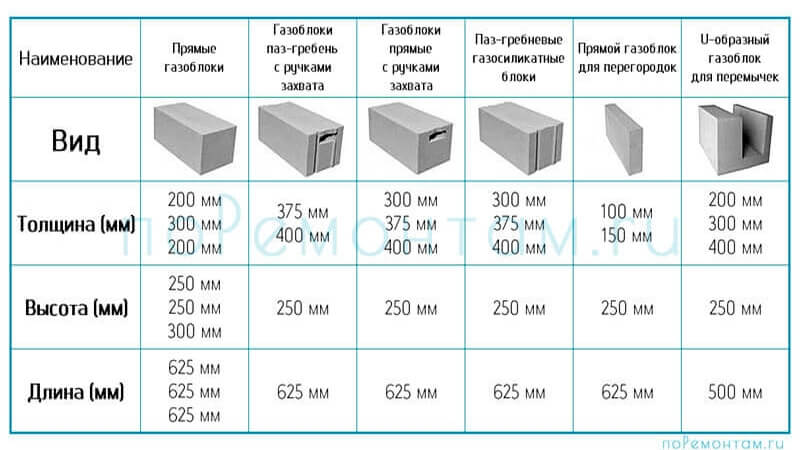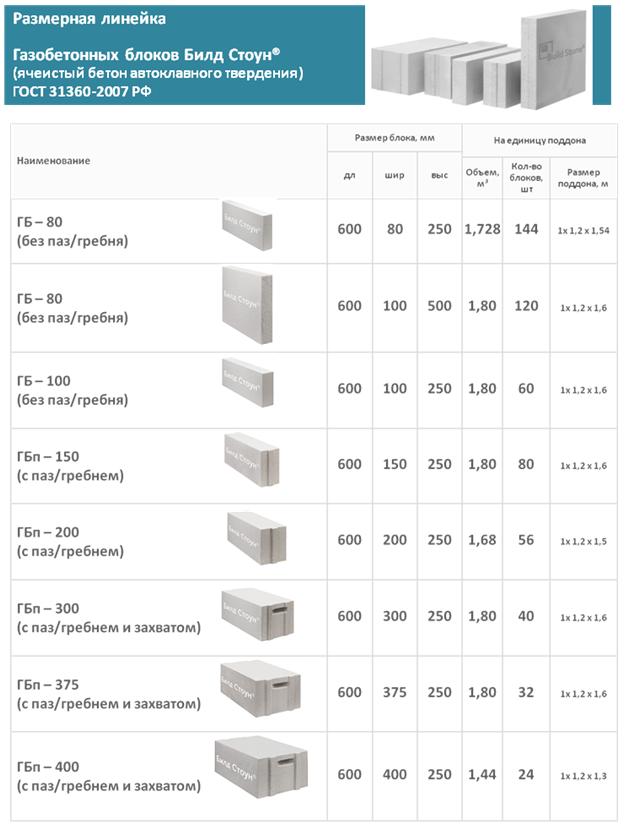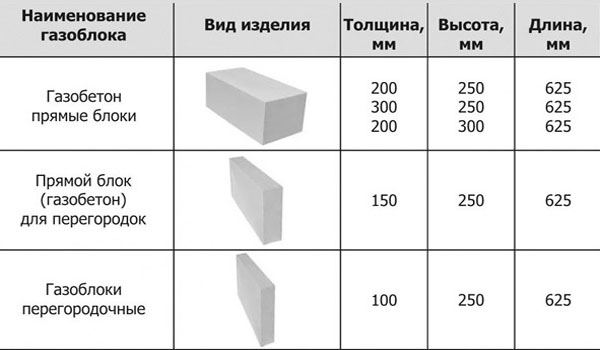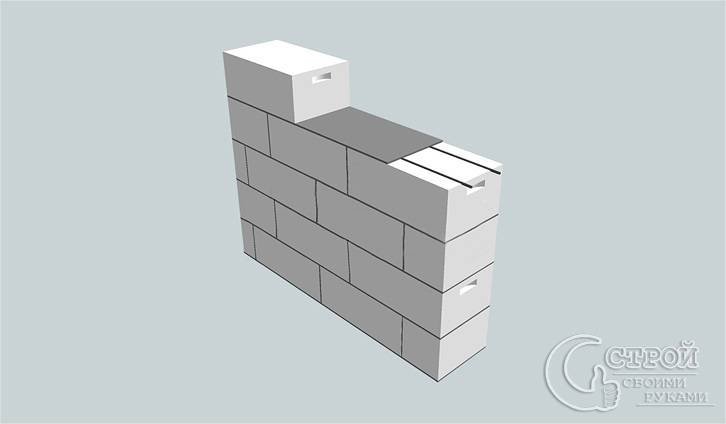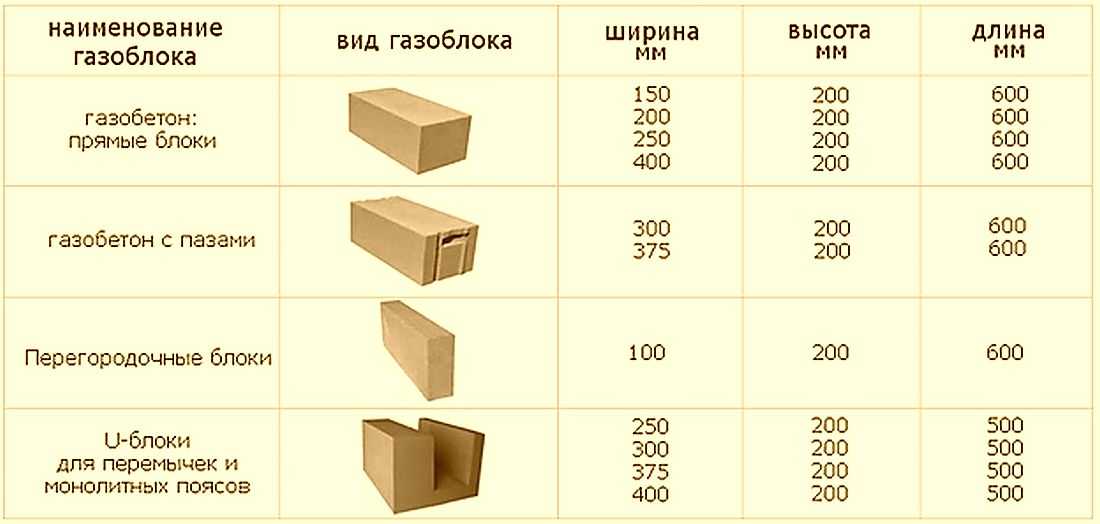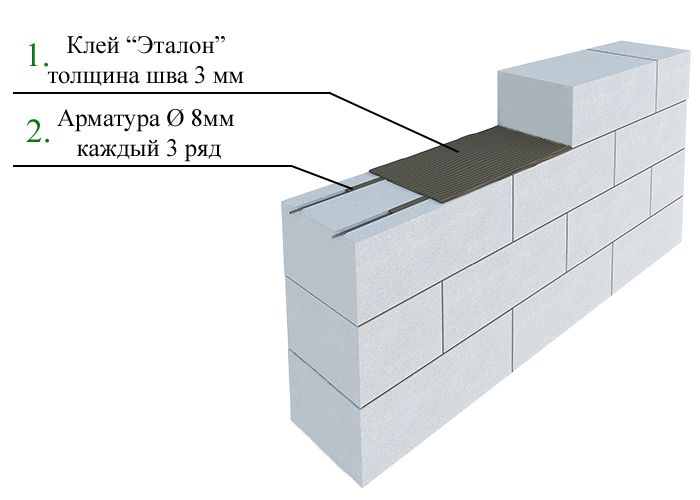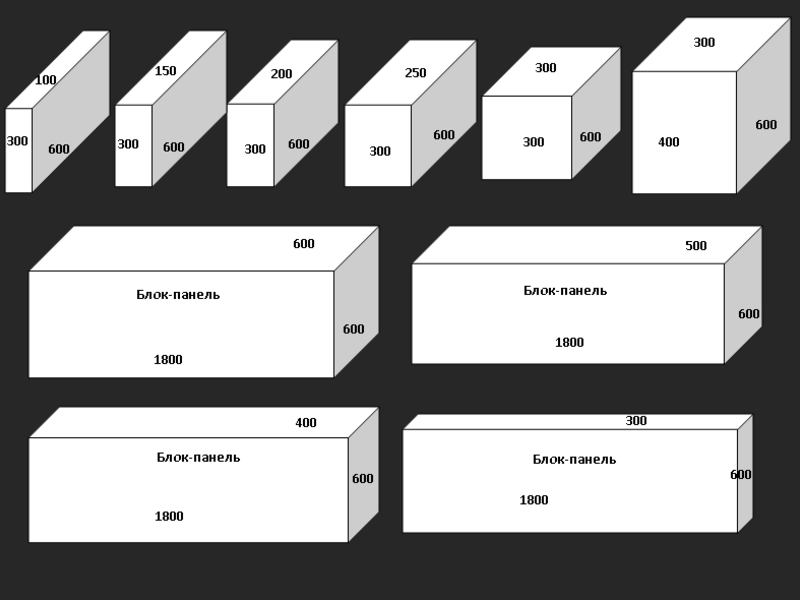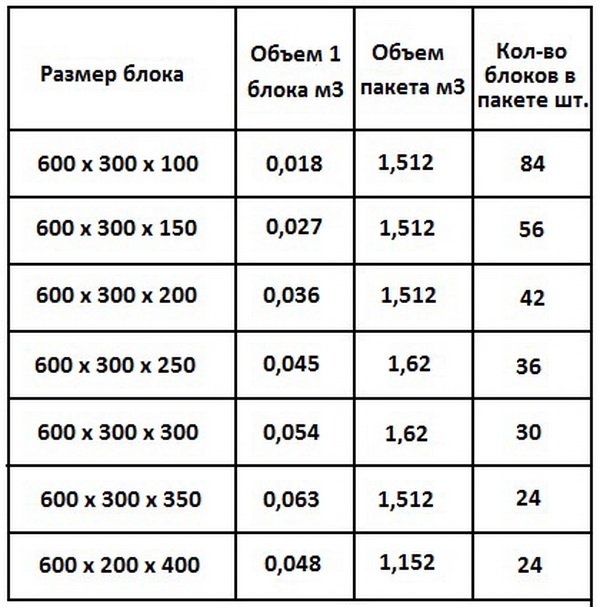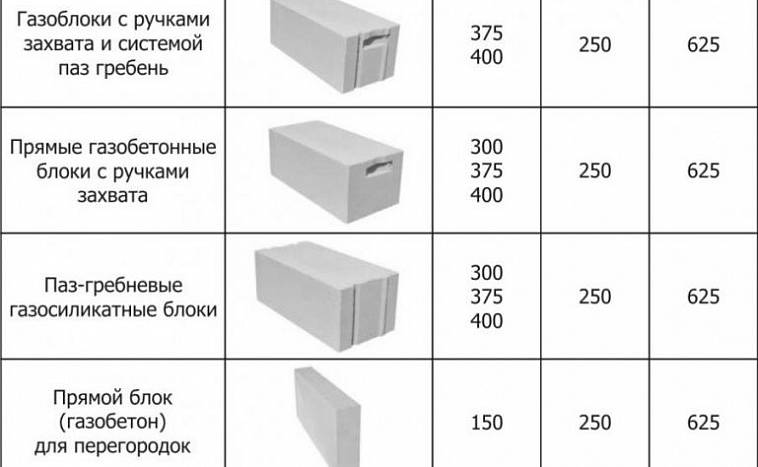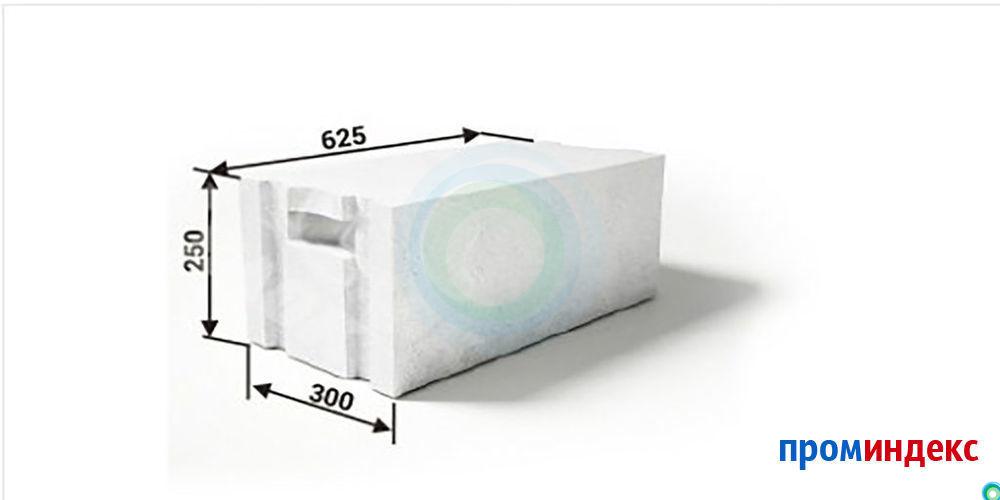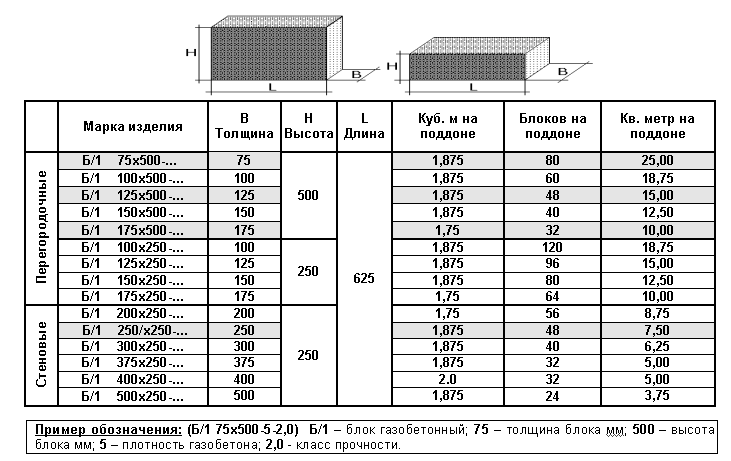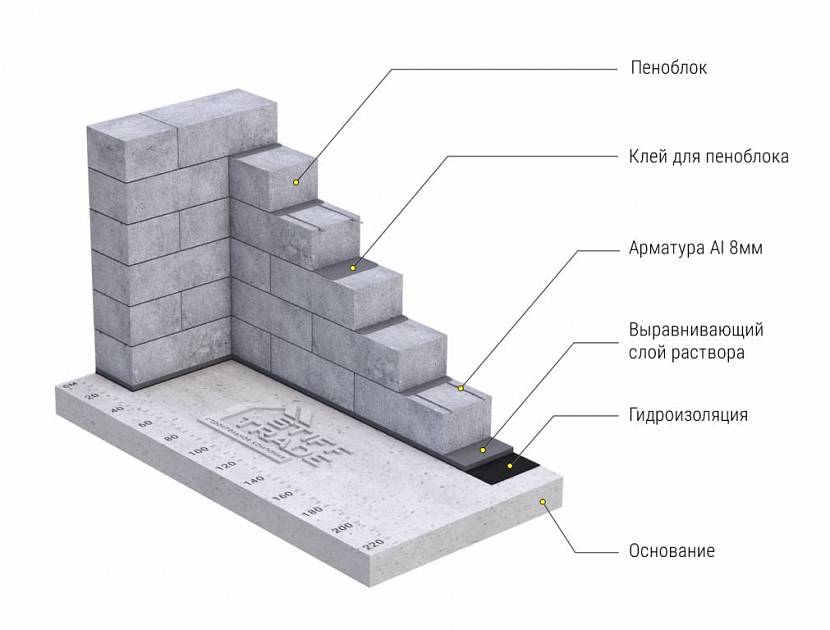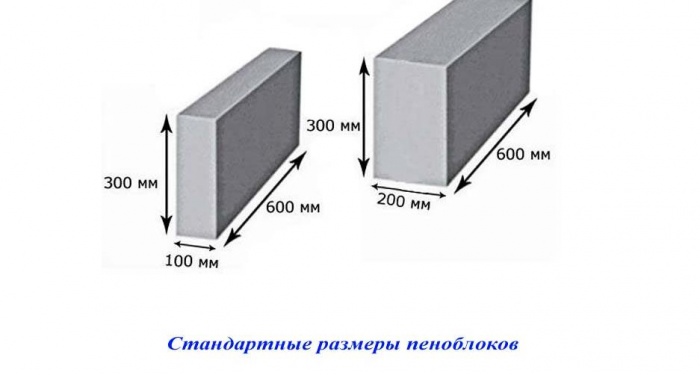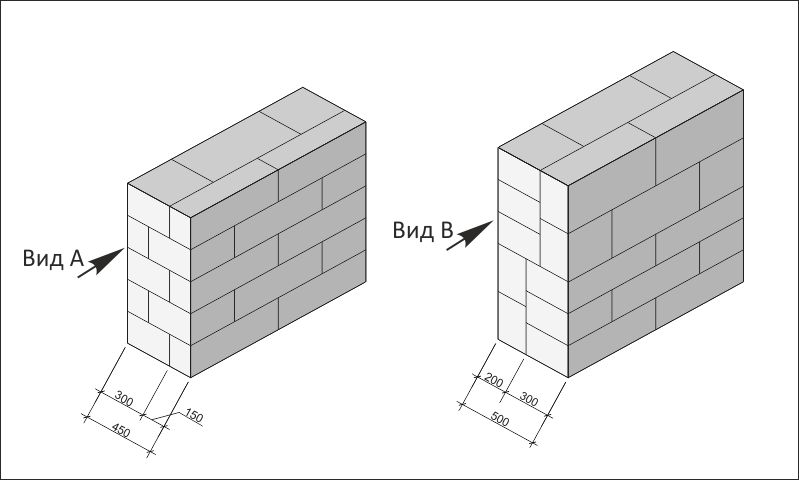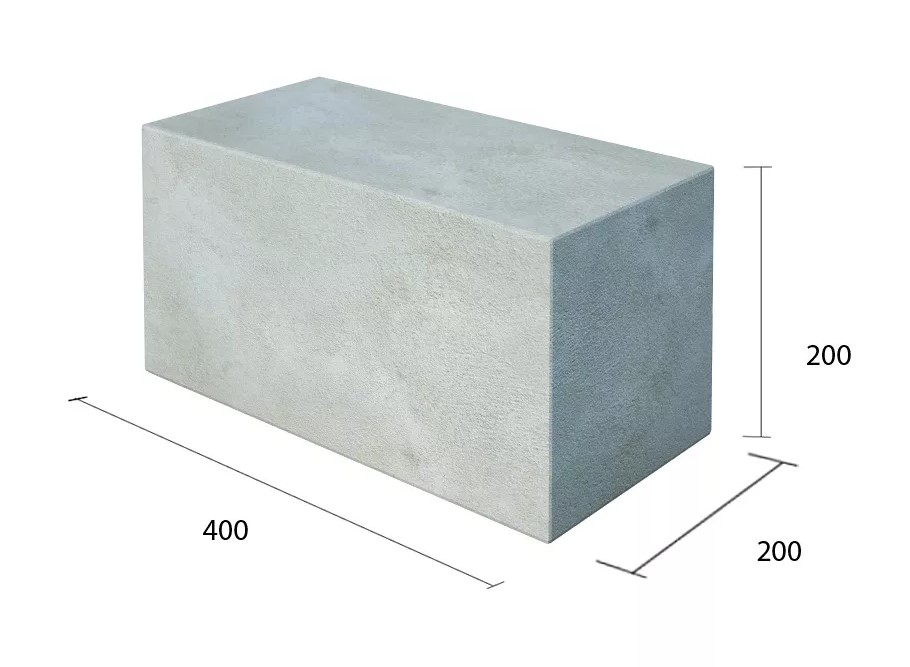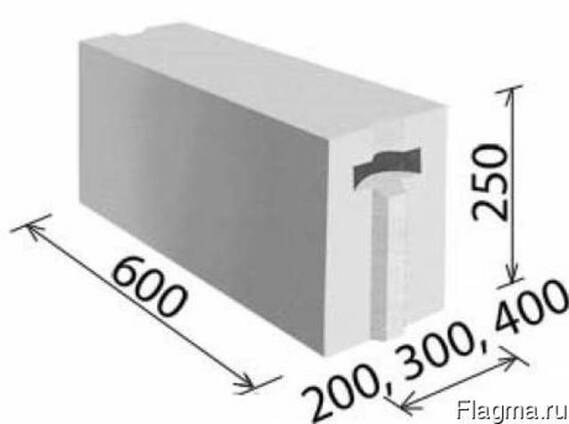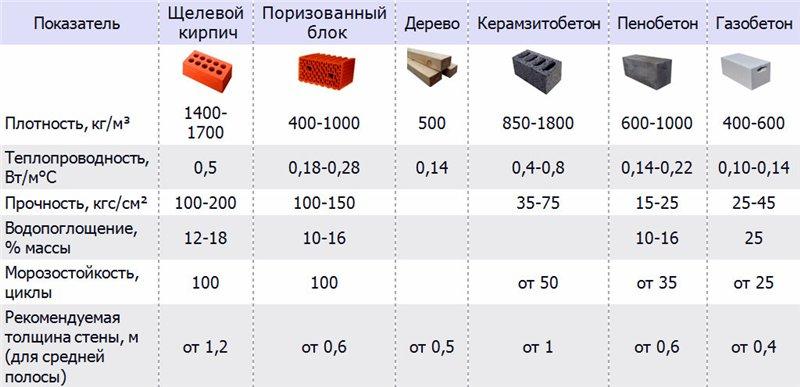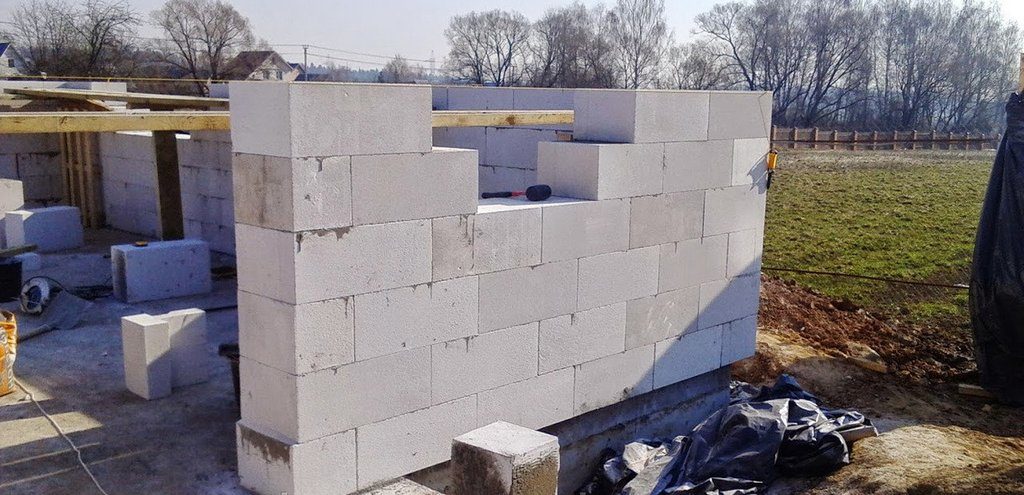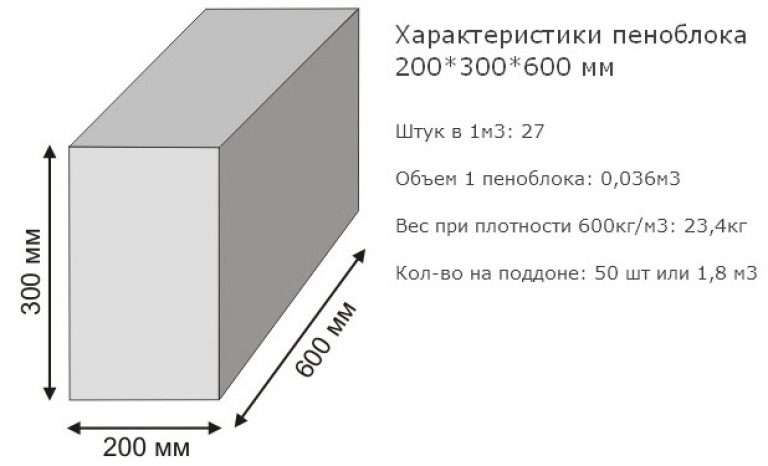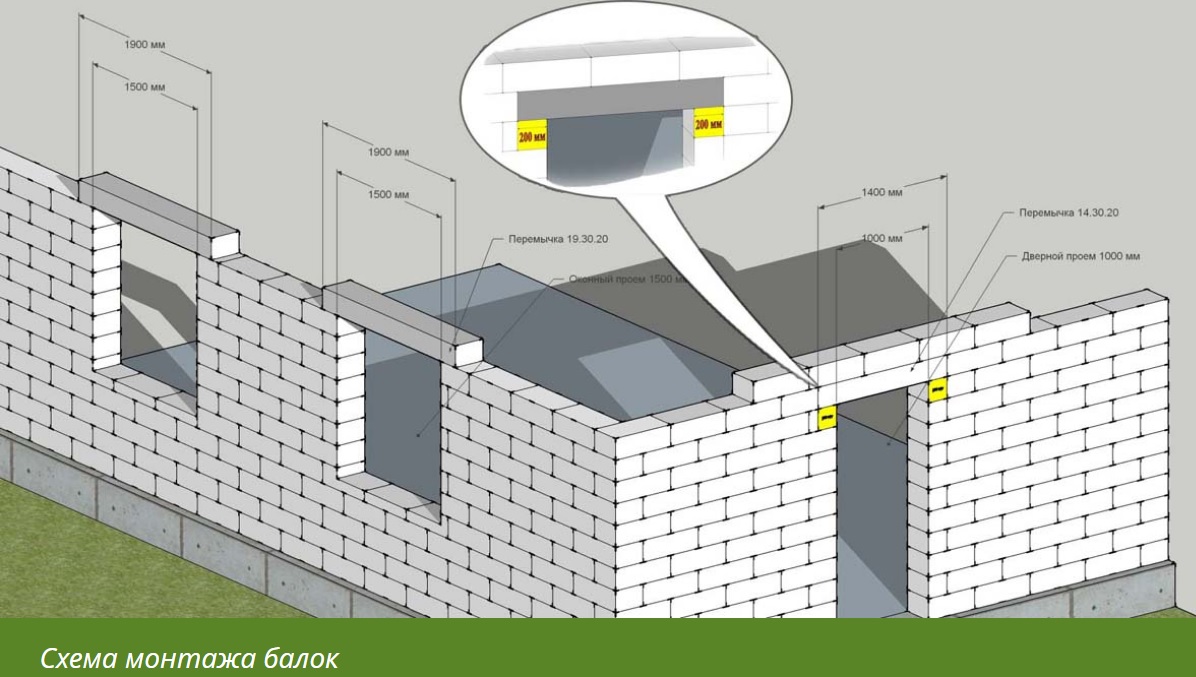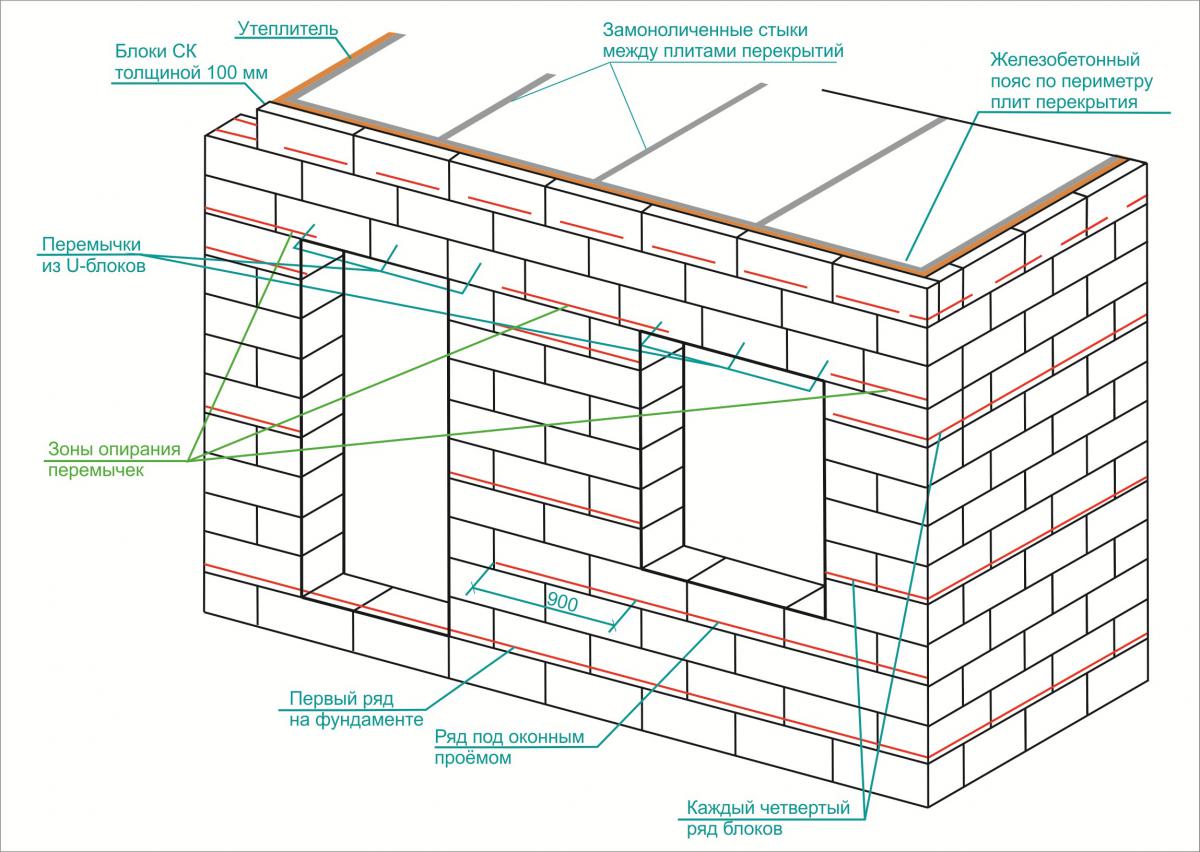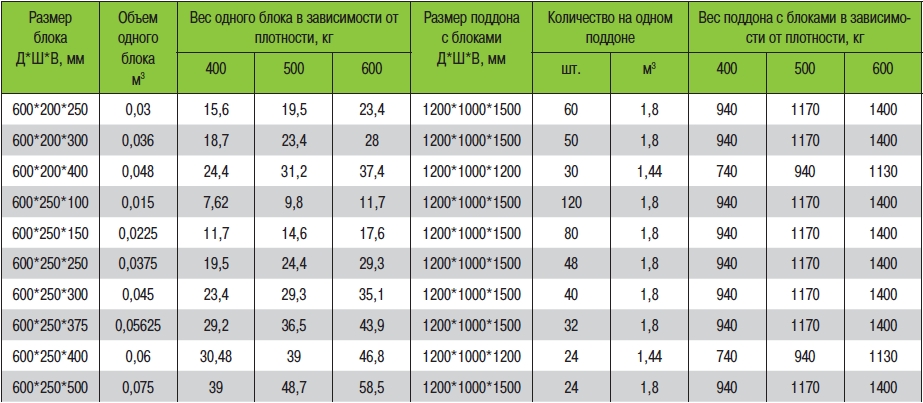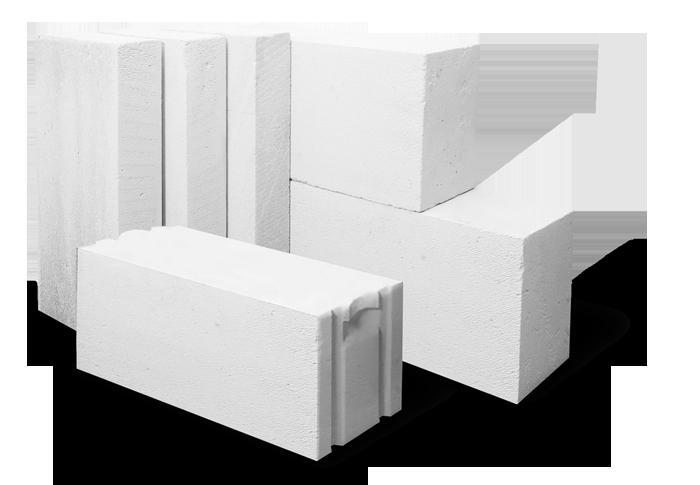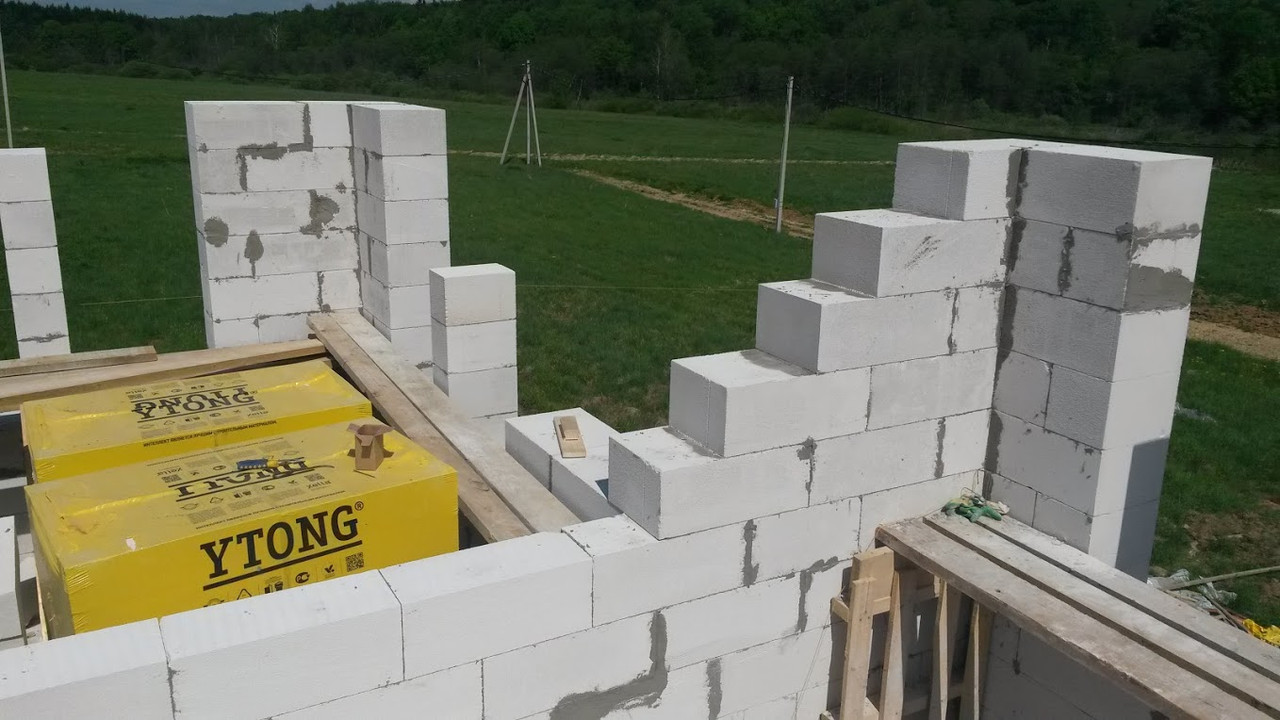Calculation scheme
The principle of calculating the required material is very simple. Complex formulas are not required here. To correctly calculate the number of blocks, it is enough to use the following scheme:
- To determine the total area of the wall, you need to multiply the length and height, then subtract the dimensions of door or window openings from the resulting value, which are calculated according to the same scheme. For example: a wall 10 m long, 3 m high, the total area is 30 sq. M. There is one opening in the design of 1 * 2 m in size. The final number will be as follows: 28 sq. M. For walls with complex shapes, a similar calculation principle applies.
- To determine the number of gas blocks, you will have to divide the resulting area of the future partition by the side parameters of the block.

Wall block (sibit) from aerated concrete 300 mm
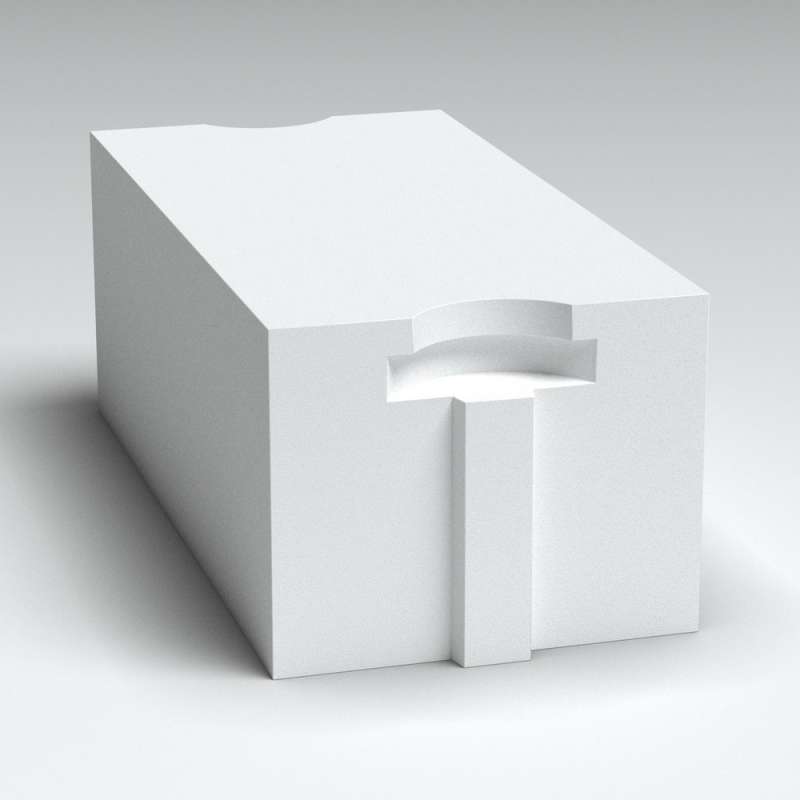
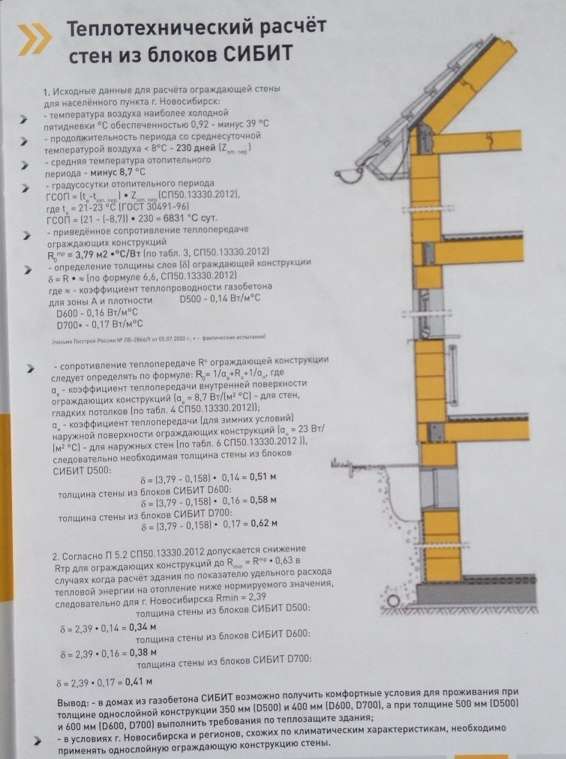
GOST 31360-2007
Unit size: 625 * 300 * 250mm
Strength class of aerated concrete: B 2.5
Aerated concrete grade by average density: D600
Number of blocks in a pallet: 16 pcs.
Pallet weight: 585 kg
Pallet volume: 0.75 cubic meters.
Product pallet size: 625 * 1000 mm
Number of sq.m. pallet: 2.5
What is included in this price: 1 pallet of any thickness (100, 150, 200, 240, 300, 400 mm) and 1 bag of glue weighing 25 kg.
The price is for 1 pallet! Discounts!
Our company is the official partner of the SIBIT plant. You can pick up the products directly at the factory, or we will make you delivery to the place. Prices for the delivery of aerated concrete (sibit) in the districts of Novosibirsk and in Berdsk.
Sibit delivery options:
1-2 pallets: Gazelle, self-loading
1-15 pallets: self-loading
35 pallets: length, self-cargo
Call us! Discounts are being discussed! Monday-Friday from 8-00 to 17-00: (383) 351-37-02, 354-84-99.
Monday-Sunday from 7-00 to 22-00: 913-987-46-58, 913-908-03-26 (MTS), 952-934-85-94 (Tele2). Whatsapp
Technical features of autoclaved aerated concrete
Sibit is used as a material for masonry of external and internal walls and partitions of structures not higher than 5 floors and located in the climatic zone where the air humidity does not exceed 75%.
Where the humidity is higher than 75%, construction from aerated concrete blocks is allowed in the case of applying a special vapor barrier coating on the internal surfaces. During construction from the 5th to the 9th floor, sibit blocks can be used in the self-supporting walls of the house.
Sibit buildings have excellent fire performance. The structure will withstand at least 4 hours of open fire without loss of thermal insulation and bearing capacity, as well as integrity.
Excellent soundproofing properties are one of the main features of aerated concrete blocks. For example, for a wall with a thickness of 100 mm it is 36 dB, for a wall with a thickness of 150 mm - 55 dB. This is possible due to the porous structure of aerated concrete.
SIBIT aerated concrete blocks can be used for the construction of buildings in any region of Russia. For the regions of the Far North, it is necessary to provide a sibit for frost resistance of at least F35. Autoclaved aerated concrete can withstand one hundred thawing and freezing cycles.
If we compare autoclaved aerated concrete with bricks, then there are some advantages in terms of earthquake resistance, since the full vertical weight of the building during an earthquake plays an important role.
What to put the first row on?
If the difference in the base is more than 5 mm, which is quite common, then ordinary glue for gas blocks will not work. Here you will need to combine the masonry of the initial row with leveling the surface for the subsequent laying of blocks.
In this case, the installation of the starting row should be carried out exclusively on properly prepared, high-quality cement-sand masonry mortars. Since the base of the basement is not perfectly flat, with a tolerance for slight differences and roughness, the use of expensive glue will be an unacceptable luxury for laying on the foundation. In addition, the glue is more flexible, it is intended for fine-seam masonry.
reference
It is recommended to use a standard proportion of cement and sand passed through a sieve in a ratio of 1: 3 for laying the initial row of blocks, with the addition of water until a mixture of relatively thick consistency is obtained.

A properly prepared solution will not only allow you to get the most reliable connection of aerated concrete to the base, but also help to correct all existing irregularities. It is also allowed to use ready-made, factory mixes made on the basis of cement and sand, supplemented with hydrophobic, water-retaining additives and plasticizers.
Advantages and properties of Sibit products
All the advantages of this material are based on the technical characteristics of the sibit units. Their coordinated combination in the best way meets the requirements for products for structural and structural and thermal insulation purposes. For clarity, let us combine the main properties of the sibit and compare them with traditional bricks.
| Indicator name | Unit rev. | Sibit | Brick | Notes (edit) |
|---|---|---|---|---|
|
Weight of structure |
kg / m² |
300 |
1200 |
A sibit block with a volume of 0.036m³ weighs 18 kg, and the same volume of bricks (15-20 pieces) - up to 80 kg. |
|
Wall thickness (for climatic conditions of Siberia) |
mm |
600 |
1300 |
|
|
Density |
kg / m³ |
400-700 |
1800 |
|
|
Coef. thermal conductivity |
W / m * K |
0,16 |
0,61 |
|
|
Frost resistance |
cycle |
200 |
35 |
The vapor permeability of sibit blocks is 5-6 times higher than that of bricks and is equal to 0.17 g / m. This means that aerated concrete is able to get rid of moisture that has got into it in a short time and provide a normal air regime in the room.
Today, the construction of houses from Sibit in Siberia is very popular, the pros and cons of such construction should be considered in more detail. First, about the merits.
- The low coefficient of thermal conductivity allows you to significantly save on heating the house. The thermophysical characteristics of the sibit enable the walls to retain heat inside the premises, and the wall surfaces to be warm when touched.
- The low physical weight of aerated concrete structures does not require a strong foundation for a sibit house.
- In terms of strength, sibit products, and especially reinforced ones, are quite comparable to ordinary and reinforced concrete.
- The extremely high index of frost resistance indicates that sibit is an excellent material for construction in Siberia.
- The use of floor slabs made of porous concrete Sibit is a finished insulated attic, saving expensive wood and reducing the cost of one square meter of the house.
- Labor costs for the construction of buildings from sibit are almost one and a half times lower than when using bricks. Experienced bricklayers during one working shift lay 15 m³ of lightweight blocks, bricks can make no more than 7 m³. This means that you can build a house from Sibit in a shorter time.
It is difficult to find flaws in sibit products, except for its fragility. But this disadvantage can be perfectly handled by careful handling of blocks and plates during transportation, rigging and any movements.
main parameters
Throughout the volume of the sibit there are holes filled with air with a diameter of 1-3 mm. Such a structure of the block provides a chaotic movement of air inside, thereby reducing its heat-conducting properties. Due to its porosity, the material is lightweight, it is able to create a cozy microclimate in the room. The walls, built of sibit blocks, keep the internal heat well in the room and prevent the penetration of cold from the outside. Therefore, this material is often used for the installation of building structures in the northern regions of the country.
For the manufacture of sibit bricks, a solution of ingredients is prepared by mixing lime, crushed cement, sand, water and a foaming additive. Also, aluminum shavings are present in the sibit blocks. The composition is poured into large containers in which voids form pores, and the product hardens there for some time.The plates are cut into pieces of suitable dimensions and placed in an autoclave - there the products are treated with high-pressure steam for 10 hours.


The range of sizes of sibit blocks is very large, but it is also necessary to distinguish them by the variety of raw materials used for their manufacture. Often the following models are presented on the market:
- structural;
- heat insulating;
- constructional.
Constructional varieties are the strongest and most massive. Their density index can reach from D900 to D1200. Structural and heat-insulating blocks are so strong and reliable that they can be used to construct a small low-rise building with a wall thickness of one brick. The heat-conducting properties of such products are very high: walls erected with their help do without an insulating overlap.
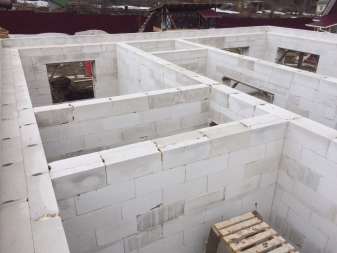

The thickness of the load-bearing walls without insulation for permanent residence
determines not only the strength and reliability of the structure, but also the cost of its maintenance. If you save on the thickness of the supporting structures, then this will require additional funds for their insulation and strengthening. Insufficient width will lead to freezing of aerated concrete and large heating bills. In addition, due to the temperature difference, there is a risk of condensation and the development of mold.
Proceeding from this, when choosing the parameters of the future home, you need to be based on factors such as heat and cold levels, air humidity and structural features of the building.
Calculation depending on the region of residence
When planning construction, the average temperature in winter and summer is taken into account
Maximum historical records are not taken into account. Even if the temperature reaches its peak values, it will not last long. In addition, the impact of natural disasters can be compensated for by household appliances: air conditioners, heaters and autonomous systems.
For northern regions, you should choose a wide material with low strength and thermal conductivity. The soil in such areas is characterized by stability and stability. The D300-400 models are the best option.
In places with mobile soil, preference should be given to blocks of high grades, since they must be resistant to shocks and seasonal movements. Depending on the seismic activity, it is advisable to stop at D600-1200 grades.
In addition, it should be remembered that in all cases, aerated concrete wall decoration is necessary. This material is fragile and absorbs moisture well. This expense item is included in any project.
Thermal conductivity
External walls protect the interior of the house from the effects of temperature extremes. At the same time, internal bulkheads also play a role in retaining excess heat and cold.
The blocks themselves are an excellent insulating material that does not need additional insulation. The lower the density of stones, the better they protect the house from external factors. At the same time, a directly proportional decrease in strength is observed. The d400-800 series models are the optimal choice for the construction of residential buildings, which are perfectly adapted for use in all climatic conditions.
An example of calculating thickness for the Moscow region
Large temperature drops are typical for Moscow and the region, which can vary within ± 40 ° C during the year. At the same time, extreme cold and heat can last for weeks. In such conditions, it is necessary to build houses from blocks that are able to withstand such influences. Knowing the value of the thermal conductivity of commercially available materials, you need to choose an equivalent equal to 40 cm with a thermal conductivity coefficient of 0.1.
Calculation for blocks D400
D400 outdoor units have an average thermal conductivity of 0.10 W / (m × ° C). Based on these indicators, the required thickness of the stones should be at least 40 cm.In this case, the supporting structures will be able to protect the interior of the house from extreme temperatures for 10-15 days.
When choosing a product, one should take into account the cold bridges that form at the joints. Even a high-quality polymer solution gives a loss of 10%. Based on this, blocks of 48 cm should be used, followed by finishing with a thin layer of waterproofing. Such a solution will allow construction to be carried out quickly and inexpensively while achieving the proper level of quality and strength.
Calculation for blocks D500
D500 outdoor units have an average thermal conductivity of 0.12 W / (m × ° C). Based on these indicators, the required thickness of the stones should be at least 48 cm. Such a solution provides not only a good level of heat retention, but also the strength of the entire structure, the height of which can be 2 floors.
Since the value of 48 cm is the boundary limit, there is no margin left with this option. The solution is to use warm facade plaster, at least 5 cm thick. This will not only insulate aerated concrete, but also add resistance to temperature changes.
Features of using aerated concrete
Aerated concrete is a unique and time-tested material used in housing construction. Professionals use it everywhere to build different types of walls. The block manufacturing technology has its own characteristics. Lime, cement, quartz sand are used to create a product. All of these elements are sealed in plain water, placed in a special container and stirred for several minutes. The interaction of aluminum powder and lime promotes the formation of pores. All chemical reactions take place in metal containers.

The mixture of natural ingredients is carefully processed, consisting of vibration, hardening and excess removal. Aerated concrete is made in several ways: autoclave and non-autoclave. In the first case, the material is treated with steam. Under the influence of high temperature, the strength properties of aerated concrete are improved.
Non-autoclave technology is a natural way of hardening a natural mixture, without the use of special technical equipment. Like any building material, aerated concrete has its advantages and disadvantages.
The choice of builders in favor of aerated concrete explains the properties and capabilities of a natural product. Here is some of them:
- Lifetime. Due to its strong structure, aerated concrete is not subject to mold and decay. Residential buildings created from such raw materials will serve for the benefit of their owners for more than one year.
- Environmental friendliness. The product is made from natural raw materials, in which there are no toxic substances at all. Environmentally friendly material is absolutely harmless. Does not pose a danger to human health.
- Thermal insulation. The thermal insulation effect is achieved due to the cellular structure of the product. In summer, houses made of aerated concrete are cool, in winter they are cozy and warm.
- Profitability. The weight and dimensions of the material allow you to reduce the cost of installing the foundation and save well on transportation and installation.
- Fire safety. There are no combustible components in aerated concrete. Therefore, it resists an open flame well.
However, due to constant moisture and dampness, aerated concrete gradually loses its strength. The material has a low coefficient of thermal insulation. Therefore, buildings need additional insulation. This is one of the main disadvantages of aerated concrete.
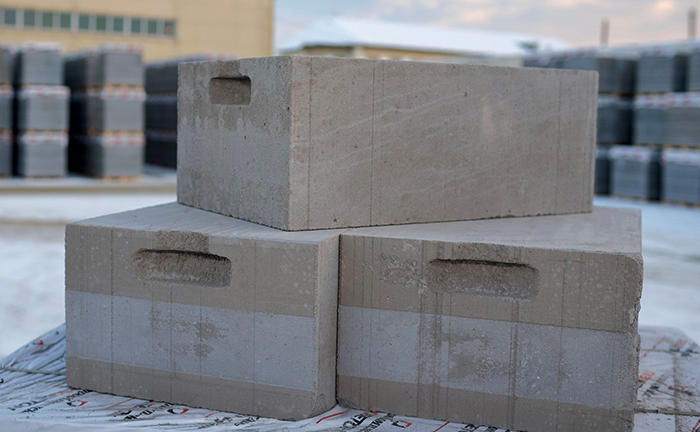
How is it produced?
The secret of quality lies in strict adherence to proportions and production standards. As part of the mixture for the manufacture of aerated concrete, the following components are used:
- cement;
- sand;
- water;
- lime;
- aluminum powder.
The ingredients are crushed and ground thoroughly to remove all excess impurities, for example, sand processing can take up to 8 hours. After preparation, dry components are placed in a special container, and then the bottom layer is poured with water and stirred until a creamy consistency.The solution is left for a while to allow it to harden.
The resulting blocks are cut to size and placed in an autoclave oven for 10 hours. Under the influence of strong pressure, concrete acquires increased strength and stability, its performance characteristics are improved when compared with a material obtained by natural hardening.
The substance is supplied in special closed containers to minimize interaction with air. When aluminum powder is added, a reaction occurs between it and lime, which leads to the formation of a porous concrete structure. The pore volume is approximately 3/4 of the total area of the block, which is why the material is lightweight.
For sawing, a machine method is used, which allows you to achieve ideal geometry. The cuts are smooth, and the dimensions exactly correspond to the specified parameters. Finished blocks are placed on pallets. After packing, the materials are transported to the warehouse. Depending on the size of the products, their number in the pallet and the total weight may be different, it is better to check this when purchasing.
Sizes of different types
There are the following variety of standard sizes (see table). It should be said that it mentions the parameters of the most common modifications, but not all of them.
|
Name |
Thickness, mm |
Height, mm |
Length, mm |
|
Straight |
200 300 200 |
250 250 300 |
625 625 625 |
|
With gripper handles and tongue-and-groove system |
375 400 |
250 |
625 |
|
Straight with gripper handles |
300 375 400 |
250 |
625 |
|
Groove-ridge blocks |
300 375 400 |
250 |
625 |
|
Straight for partitions |
150 |
250 |
625 |
|
Partition |
100 |
250 |
625 |
|
U-shaped for lintels and monolithic belts |
200 300 400 |
250 |
500 |
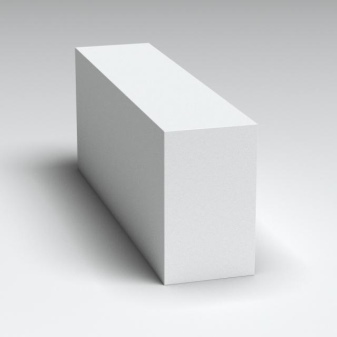

The range of sizes of sibit blocks is determined by a very large area of their application. Therefore, in the brand of brick there is an abbreviation by which you can navigate. For example, GB-100 is a product with dimensions of 100x250x600 mm, which does not have grooves and edges. This is an absolutely flat brick, from which walls of any configuration can be erected. Another product is labeled GBr-150. The parameters of this product are 150x250x600 mm. In such a block, there is a groove and a rib, which allows you to lay out equal structures of walls and partitions.
There is a larger similar brick with dimensions of 200x250x600 mm. This is the GBr-200 model, also equipped with a rib and a groove. GBr-300 (200x250x600 mm), in addition to the groove and rib, also has a handle. This innovation provides maximum convenience in the construction of structures from such blocks. This model is also presented in larger modifications GBr-375 and GBr-400.

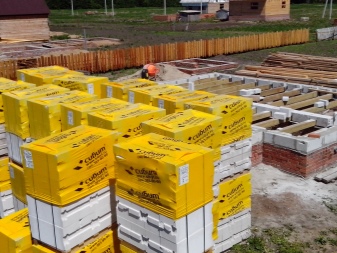
If for construction you need aerated concrete floor slabs made in an autoclave, then you should choose a material produced in accordance with GOST 19570-74. This product is intended for floor installation in low-rise buildings, attics and basements. The size of the base plate of the part is 120 mm with a possible error of up to 10 mm. If long lengths are required for construction, it is necessary to focus on goods of the following dimensions: 2740x600x240 mm. The last two sizes are standard, but lengths may vary. There are several dimensions - 3740, 4040 and 4240 mm - for construction work.
The size of the sibit will interest not only a professional builder, but also a home craftsman. The maximum size of floor tiles is 5940 mm, such a product costs 6040 rubles. However, there are intermediate values, which are equal to 5440 and 5040 mm - in these two cases, prices will be 5500 and 5112 rubles, respectively.
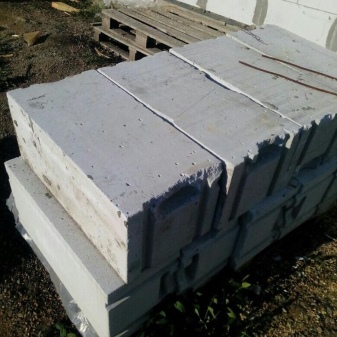

Usage Tips
Sibit is quite popular, so it is easy to find it in hardware stores. When buying, it is worth considering the following points:
- choose blocks that have a uniform color and structure, it is advisable to come to the base and look at the batch of goods with your own eyes, and not order remotely;
- ask the seller for a quality certificate to make sure that there is no fake in front of you - such a document in the store must be provided at the request of the buyer;
- make sure that the aerated concrete is well packed, do not purchase the product without a protective film, as it may be damaged during delivery.
It is not so difficult to properly lay the sibit with your own hands. Due to the lightness of aerated concrete, it is easier to work with it than with other materials. The installation speed also increases, large blocks are stacked much faster than small bricks.
Transportation of aerated concrete does not require serious costs. The material is delivered to the site using a truck. Blocks can be transported across the territory on a utility wheelbarrow or carried manually. They have special holes-handles for convenience
It is important to be careful not to drop the products as they may break or crumble due to their fragile structure.
When building houses, baths and garages, standard wall blocks 200/300/600 mm are usually used. The volume of one such product is 0.036 m³, respectively, you can calculate the flow rate per 1 m3. The result is the number 27.78, which needs to be rounded to the nearest integer, as a result 28 blocks are required.
Products are shipped from the factory in pallets. Additionally, protective packaging is used so that the material is not damaged
When buying blocks, it is important to take into account how many pieces are in a pallet, this number can be different. For example, for a standard size of 200/300/600 mm, options for 25, 40 or 50 pieces are available.
Working with blocks will not cause problems, if you already have experience in laying bricks, the basic principles are about the same
Particular attention should be paid to the first row, it is important to accurately measure the angles, control the verticality using a plumb line or level. At the same time, there are certain nuances that are important precisely when laying a sibit
Use a special adhesive. It is designed specifically for interaction with this material, therefore, when applied, it provides a strong adhesion between the elements. An exception can be made for the first row, since thermal insulation is pre-laid on the foundation, and the blocks can be safely attached to it using a conventional cement and sand mortar.
Process correctly. Sibit can be cut, sawed and planed, which allows you to quickly get additional elements right on the site, using the tools at hand. But if you need to drill holes, choose a drill over a hammer drill, as it can crush the porous structure of the material.
Observe order. After laying the first row, you need to wait a few hours and only then start the second. The surface of the blocks should be treated with a special plane so that it becomes rough, then the glue will set better and the adhesion will increase. Reinforcement is performed when the fourth row is completed. Iron rods are placed in the cut grooves.
Choose the optimal temperature. It is best to do construction in a warm, but not hot time. The suitable range for work is from +5 to +25 degrees. If the temperature rises higher, the blocks will have to be moistened, and in winter it is necessary to use special cold-resistant glue, otherwise the structure will not hold.
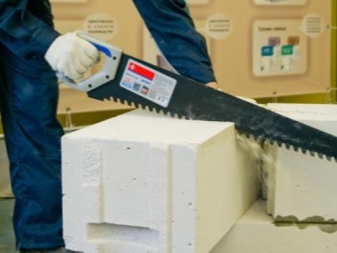

It should be borne in mind that buildings from sibit require finishing work - both external and internal. It is necessary to protect the material from moisture and other influences
It is important that the lining does not clog the pores of aerated concrete, it must breathe freely. For this, a small air gap is left between the facade layer and the wall.
Before applying the plaster, it is necessary to use a primer solution, as well as apply a reinforcing mesh, since the surface of aerated concrete itself does not have high adhesion
It is important to choose finishing materials that are suitable for working with a cellular base. In addition to plaster, you can use a protective paint
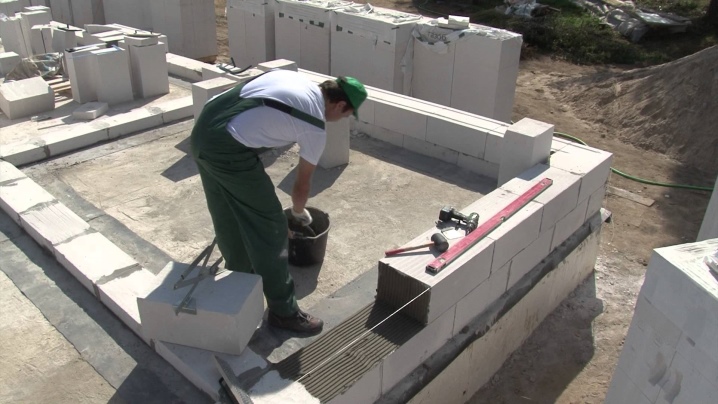
The basics of laying sibit on polyurethane glue in the video below.
How does Sibit aerated concrete differ from other types of lightweight concrete?
Aerated or lightweight concrete is divided into several main types:
- Aerated concrete;
- Foam concrete;
- Aerated foam concrete.
They are also divided into two types according to the manufacturing method, they are:
- Autoclave - a distinctive feature of the technology is drying products in an autoclave oven, where, under the influence of high temperature, the blocks receive improved strength and resistance to external influences.
- Non-autoclave - blocks harden in natural conditions.
So what is the difference between Sibit and foam concrete? Let's take a look at the main differences.
Firstly, Sibit is made by autoclaving, so its strength indicators are much higher than that of a foam block. This allows the use of aerated concrete for the construction of multi-storey buildings.
Secondly, Sibit blocks have a flat surface and straight lines, which, when laid, allows you to save on glue solution, due to the tight fit of the blocks to each other.
For the rest of the indicators, the materials are equal to each other, therefore, when choosing between Sibit or a foam block, you should take into account your own preferences, cost and purpose of use.

